Seleccionamos las mejores ofertas del día relacionadas con Fluval para que encuentres rápidamente el mejor precio para ti. Aprovecha todas las ventajas que te ofrece Luprice.es, y compra Fluval de una forma fácil y cómoda.
 Fluval C2 Bio ScreenERROR-SentinelBlockException by global-filebroker-upstream-s from com.alibaba.global.filebroker.api.FileBrokerReadService:readPublicFileContent(com.alibaba.global.filebroker.api.dataobject.common.BaseFileOpParamsDTO)Miravia-24,12%21,06 €15,98 €Ver más información
Fluval C2 Bio ScreenERROR-SentinelBlockException by global-filebroker-upstream-s from com.alibaba.global.filebroker.api.FileBrokerReadService:readPublicFileContent(com.alibaba.global.filebroker.api.dataobject.common.BaseFileOpParamsDTO)Miravia-24,12%21,06 €15,98 €Ver más información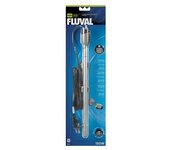 Fluval M Calentador, 150WERROR-SentinelBlockException by global-filebroker-upstream-s from com.alibaba.global.filebroker.api.FileBrokerReadService:readPublicFileContent(com.alibaba.global.filebroker.api.dataobject.common.BaseFileOpParamsDTO)Miravia30,95 €Ver más información
Fluval M Calentador, 150WERROR-SentinelBlockException by global-filebroker-upstream-s from com.alibaba.global.filebroker.api.FileBrokerReadService:readPublicFileContent(com.alibaba.global.filebroker.api.dataobject.common.BaseFileOpParamsDTO)Miravia30,95 €Ver más información Fluval Nano Bio FoamexERROR-SentinelBlockException by global-filebroker-upstream-s from com.alibaba.global.filebroker.api.FileBrokerReadService:readPublicFileContent(com.alibaba.global.filebroker.api.dataobject.common.BaseFileOpParamsDTO)Miravia-17,65%12,01 €9,89 €Ver más información
Fluval Nano Bio FoamexERROR-SentinelBlockException by global-filebroker-upstream-s from com.alibaba.global.filebroker.api.FileBrokerReadService:readPublicFileContent(com.alibaba.global.filebroker.api.dataobject.common.BaseFileOpParamsDTO)Miravia-17,65%12,01 €9,89 €Ver más información Fluval 106 Tapa del RotorRotor covers for fluval filters increase safety in your filters and prevent some type of debris from entering the rotor, damaging it and, therefore, end up making the filter work worse or completely damaged. The rotor cover is very easy to install and will be the perfect protection for our filters and our fish that live in the aquarium. They are small essential parts in the world of aquariums, as we know that even the smallest parts play a great role in filters and aquariums in general. When we are raising some type of pet, the first thing we look for is for its safety and well-being. We will always take maximum care of your diet and hygiene, but also, almost by instinct, we will ensure above all that you feel safe and secure. Rotor covers provide us with such security. The filters will work better with these lids, so the aquarium will be fully protected from contaminating waste in the water. Features:increase the safety of the aquariumeasy to installavailable for fluval 106, 206, 306 and 406 filters. Presentation: 1 rotor cover for fluval 106Miravia-25,68%25,74 €19,13 €Ver más información
Fluval 106 Tapa del RotorRotor covers for fluval filters increase safety in your filters and prevent some type of debris from entering the rotor, damaging it and, therefore, end up making the filter work worse or completely damaged. The rotor cover is very easy to install and will be the perfect protection for our filters and our fish that live in the aquarium. They are small essential parts in the world of aquariums, as we know that even the smallest parts play a great role in filters and aquariums in general. When we are raising some type of pet, the first thing we look for is for its safety and well-being. We will always take maximum care of your diet and hygiene, but also, almost by instinct, we will ensure above all that you feel safe and secure. Rotor covers provide us with such security. The filters will work better with these lids, so the aquarium will be fully protected from contaminating waste in the water. Features:increase the safety of the aquariumeasy to installavailable for fluval 106, 206, 306 and 406 filters. Presentation: 1 rotor cover for fluval 106Miravia-25,68%25,74 €19,13 €Ver más información Fluval M Calentador, 50WEl calentador Fluval M es de alta calidad manufacturada en Europa con componentes y fabricación superiores. Su perfil elegante y estilizado ocupa menos espacio en el acuario, mientras que proporciona un rendimiento y fiabilidad excepcionales. Sus características incluyen un termostato calibrado por ordenador y un dial de control para ajustar fácilmente la temperatura.Joom37,88 €Ver más información
Fluval M Calentador, 50WEl calentador Fluval M es de alta calidad manufacturada en Europa con componentes y fabricación superiores. Su perfil elegante y estilizado ocupa menos espacio en el acuario, mientras que proporciona un rendimiento y fiabilidad excepcionales. Sus características incluyen un termostato calibrado por ordenador y un dial de control para ajustar fácilmente la temperatura.Joom37,88 €Ver más información Fluval M Calentador, 150WEl calentador Fluval M es de alta calidad manufacturada en Europa con componentes y fabricación superiores. Su perfil elegante y estilizado ocupa menos espacio en el acuario, mientras que proporciona un rendimiento y fiabilidad excepcionales. Sus características incluyen un termostato calibrado por ordenador y un dial de control para ajustar fácilmente la temperatura.Joom38,10 €Ver más información
Fluval M Calentador, 150WEl calentador Fluval M es de alta calidad manufacturada en Europa con componentes y fabricación superiores. Su perfil elegante y estilizado ocupa menos espacio en el acuario, mientras que proporciona un rendimiento y fiabilidad excepcionales. Sus características incluyen un termostato calibrado por ordenador y un dial de control para ajustar fácilmente la temperatura.Joom38,10 €Ver más información Fluval Muebles Roma 240lBricoInn-20,40%231,76 €184,49 €Ver más información
Fluval Muebles Roma 240lBricoInn-20,40%231,76 €184,49 €Ver más información Fluval Acuario Shaker 252lBricoInn691,99 €Ver más información
Fluval Acuario Shaker 252lBricoInn691,99 €Ver más información Fluval Filtro Externo Fx2BricoInn247,99 €Ver más información
Fluval Filtro Externo Fx2BricoInn247,99 €Ver más información Fluval Calentador De Acuario T50BricoInn-24,14%35,58 €26,99 €Ver más información
Fluval Calentador De Acuario T50BricoInn-24,14%35,58 €26,99 €Ver más información Fluval Acuario Evo 19lBricoInn-19,47%144,04 €116,00 €Ver más información
Fluval Acuario Evo 19lBricoInn-19,47%144,04 €116,00 €Ver más información Fluval Muebles Siena 332lBricoInn565,99 €Ver más información
Fluval Muebles Siena 332lBricoInn565,99 €Ver más información Fluval Calentador De Acuario E 200wBricoInn-16,99%46,37 €38,49 €Ver más información
Fluval Calentador De Acuario E 200wBricoInn-16,99%46,37 €38,49 €Ver más información Fluval Acuario Spec 60lBricoInn-20,48%228,87 €181,99 €Ver más información
Fluval Acuario Spec 60lBricoInn-20,48%228,87 €181,99 €Ver más información Fluval Muebles Roma 200lBricoInn-14,70%202,80 €172,99 €Ver más información
Fluval Muebles Roma 200lBricoInn-14,70%202,80 €172,99 €Ver más información Fluval Bombilla Uvc 6wBricoInn31,49 €Ver más información
Fluval Bombilla Uvc 6wBricoInn31,49 €Ver más información- Rotor Marítimo FLUVAL Cp4Rotor Marítimo FLUVAL Cp4Worten-31,08%44,69 €30,80 €Ver más información
- Rotor Marítimo FLUVAL Cp1Rotor Marítimo FLUVAL Cp1Worten-31,08%25,35 €17,47 €Ver más información
- FLUVAL Rotor Marinho Sp4FLUVAL Rotor Marinho Sp4Worten-31,08%155,84 €107,41 €Ver más información
- FLUVAL Nano Led MarinhoFLUVAL Nano Led MarinhoWorten-31,08%324,98 €223,99 €Ver más información
- FLUVAL C2 Bio TelaFLUVAL C2 Bio TelaWorten-31,08%21,94 €15,12 €Ver más información
- FLUVAL C3 Zeo CarboidratoFLUVAL C3 Zeo CarboidratoWorten-31,05%17,55 €12,10 €Ver más información
- Aquaclear Biomax 30 FLUVALAquaclear Biomax 30 FLUVALWorten-31,10%12,51 €8,62 €Ver más información
- Material Filtrante FLUVAL Nós De CMaterial Filtrante FLUVAL Nós De CWorten18,62 €Ver más información
 Fluval C3 Zeo CarbFiltering media for your fluval c backpack filter that willoptimal water conditions. In a closed aquarium, toxic compounds can accumulate very quickly, in fact, fish at no time stop generating waste throughout the day, therefore, continuous filtration is necessary to guarantee their survival. It not only serves to eliminate harmful elements from the tank, it also retains waste, achieves water oxygenation in addition to providing an ideal surface for the growth of nitrifying bacteria. A combination of mechanical, biological and chemical filter media is necessary to help youa very optimal water condition. Mechanical filtration: removes debris and particles through mechanical filters. Mechanical filtration is a type of filtration which does not alter the chemistry of the water, its objective consists of retaining and eliminating waste and debris, that is, eliminating fish excrement, sediments, un digested food, dust, etc.). Mechanical filtration will not only contribute to the overall look of your aquarium, but is also important to improving the effectiveness of the biological filtration of the filter. While the foam or mechanical pad filter solids as water passes through them, they also prevent these elements from reaching biological media and generating dead areas (places where bacteria can be accumulated). Dnitrifying bacteria, which are very advisable, will prefer higher oxygen levels as well as a clean surface to establish your colonies. Many species of bacteria that are not recommended, on the contrary, they will prefer surface areas with a low level of oxygen in addition to a high organic content. Chemical filtration: it will change the characteristics of your aquarium water through deliberate chemical reactions. Chemical filtration removes contaminants found in water such as chlorine, tap water impurities, cloudiness and other debris dissolved through chemical reactions. This provides a fairly practical way to maintain very high water quality for a long period. Active carbon: activated carbon is one of the most common chemical filter media. Water flows and passes through the filter while impurities are fixed on its surface. Together with other chemical filter media, over time the filter media will be saturated, so you should replace it approximately every month under normal conditions, or immediately if it is used for an isolated case (eliminate a residual medication or clean the cloudy water). Zeolita: ammonia continuously enters your aquarium by breathing the fish, the waste they produce and other biological processes, which is toxic if not controlled. When the ammonia levels of an aquarium are high (because ammonia levels exceed the capacity of existing beneficial bacteria), fish will generally show signs of stress: they will be able to have erratic behavior when swimming, difficult breathing, skin damage, flap damage, etc. Zeo carb: some filter media such as fluval zeo-carb includes a mixture which is half ammonia remover and half activated carbon which will be able to maintain the ammonia levels of your aquarium low in addition to eliminating molecules that provide turbidity to the water. This 2-in-1 product saves filter space and allows the user to place more filter media, to further improve transparency as well as water quality. Biological filtration: decomposes and eliminates toxins through bacterial action. This filtration is a natural action in which bacteria will reduce dangerous compounds to a less toxic way. This process known as the nitrogen cycle, involves the conversion of toxic ammonia into nitrite and subsequently into a less harmful nitrate. Biological filter media are then used to develop and promote the growth of beneficial bacteria that decompose ammonia. Biological filter media are available in porous rock form or rock glass-like material, ceramic cylinders, plastic balls, thick mesh-like material, and even slab-shaped. Presentation: 1 pack of zeo carb replacement for fluval c3 aquarium filtersMiravia-22,02%16,85 €13,14 €Ver más información
Fluval C3 Zeo CarbFiltering media for your fluval c backpack filter that willoptimal water conditions. In a closed aquarium, toxic compounds can accumulate very quickly, in fact, fish at no time stop generating waste throughout the day, therefore, continuous filtration is necessary to guarantee their survival. It not only serves to eliminate harmful elements from the tank, it also retains waste, achieves water oxygenation in addition to providing an ideal surface for the growth of nitrifying bacteria. A combination of mechanical, biological and chemical filter media is necessary to help youa very optimal water condition. Mechanical filtration: removes debris and particles through mechanical filters. Mechanical filtration is a type of filtration which does not alter the chemistry of the water, its objective consists of retaining and eliminating waste and debris, that is, eliminating fish excrement, sediments, un digested food, dust, etc.). Mechanical filtration will not only contribute to the overall look of your aquarium, but is also important to improving the effectiveness of the biological filtration of the filter. While the foam or mechanical pad filter solids as water passes through them, they also prevent these elements from reaching biological media and generating dead areas (places where bacteria can be accumulated). Dnitrifying bacteria, which are very advisable, will prefer higher oxygen levels as well as a clean surface to establish your colonies. Many species of bacteria that are not recommended, on the contrary, they will prefer surface areas with a low level of oxygen in addition to a high organic content. Chemical filtration: it will change the characteristics of your aquarium water through deliberate chemical reactions. Chemical filtration removes contaminants found in water such as chlorine, tap water impurities, cloudiness and other debris dissolved through chemical reactions. This provides a fairly practical way to maintain very high water quality for a long period. Active carbon: activated carbon is one of the most common chemical filter media. Water flows and passes through the filter while impurities are fixed on its surface. Together with other chemical filter media, over time the filter media will be saturated, so you should replace it approximately every month under normal conditions, or immediately if it is used for an isolated case (eliminate a residual medication or clean the cloudy water). Zeolita: ammonia continuously enters your aquarium by breathing the fish, the waste they produce and other biological processes, which is toxic if not controlled. When the ammonia levels of an aquarium are high (because ammonia levels exceed the capacity of existing beneficial bacteria), fish will generally show signs of stress: they will be able to have erratic behavior when swimming, difficult breathing, skin damage, flap damage, etc. Zeo carb: some filter media such as fluval zeo-carb includes a mixture which is half ammonia remover and half activated carbon which will be able to maintain the ammonia levels of your aquarium low in addition to eliminating molecules that provide turbidity to the water. This 2-in-1 product saves filter space and allows the user to place more filter media, to further improve transparency as well as water quality. Biological filtration: decomposes and eliminates toxins through bacterial action. This filtration is a natural action in which bacteria will reduce dangerous compounds to a less toxic way. This process known as the nitrogen cycle, involves the conversion of toxic ammonia into nitrite and subsequently into a less harmful nitrate. Biological filter media are then used to develop and promote the growth of beneficial bacteria that decompose ammonia. Biological filter media are available in porous rock form or rock glass-like material, ceramic cylinders, plastic balls, thick mesh-like material, and even slab-shaped. Presentation: 1 pack of zeo carb replacement for fluval c3 aquarium filtersMiravia-22,02%16,85 €13,14 €Ver más información Fluval M Calentador, 300WERROR-SentinelBlockException by global-filebroker-upstream-s from com.alibaba.global.filebroker.api.FileBrokerReadService:readPublicFileContent(com.alibaba.global.filebroker.api.dataobject.common.BaseFileOpParamsDTO)Miravia33,95 €Ver más información
Fluval M Calentador, 300WERROR-SentinelBlockException by global-filebroker-upstream-s from com.alibaba.global.filebroker.api.FileBrokerReadService:readPublicFileContent(com.alibaba.global.filebroker.api.dataobject.common.BaseFileOpParamsDTO)Miravia33,95 €Ver más información Fluval C4 Rotor (J)ERROR-SentinelBlockException by global-filebroker-upstream-s from com.alibaba.global.filebroker.api.FileBrokerReadService:readPublicFileContent(com.alibaba.global.filebroker.api.dataobject.common.BaseFileOpParamsDTO)Miravia-26,11%27,38 €20,23 €Ver más información
Fluval C4 Rotor (J)ERROR-SentinelBlockException by global-filebroker-upstream-s from com.alibaba.global.filebroker.api.FileBrokerReadService:readPublicFileContent(com.alibaba.global.filebroker.api.dataobject.common.BaseFileOpParamsDTO)Miravia-26,11%27,38 €20,23 €Ver más información Fluval C3 Bio ScreenERROR-SentinelBlockException by global-filebroker-upstream-s from com.alibaba.global.filebroker.api.FileBrokerReadService:readPublicFileContent(com.alibaba.global.filebroker.api.dataobject.common.BaseFileOpParamsDTO)Miravia-25,23%24,18 €18,08 €Ver más información
Fluval C3 Bio ScreenERROR-SentinelBlockException by global-filebroker-upstream-s from com.alibaba.global.filebroker.api.FileBrokerReadService:readPublicFileContent(com.alibaba.global.filebroker.api.dataobject.common.BaseFileOpParamsDTO)Miravia-25,23%24,18 €18,08 €Ver más información Fluval C4 Bio ScreenERROR-SentinelBlockException by global-filebroker-upstream-s from com.alibaba.global.filebroker.api.FileBrokerReadService:readPublicFileContent(com.alibaba.global.filebroker.api.dataobject.common.BaseFileOpParamsDTO)Miravia-25,68%25,74 €19,13 €Ver más información
Fluval C4 Bio ScreenERROR-SentinelBlockException by global-filebroker-upstream-s from com.alibaba.global.filebroker.api.FileBrokerReadService:readPublicFileContent(com.alibaba.global.filebroker.api.dataobject.common.BaseFileOpParamsDTO)Miravia-25,68%25,74 €19,13 €Ver más información Fluval CO2 Disco CerámicoOs kits de Co2 comprimidos Fluval contêm tudo o que precisa para cultivar plantas exuberantes e vibrantes no seu aquário. Este sistema de cartucho descartável está disponível em 2 tamanhos e é muito fácil de instalar, garantindo um fluxo constante de dióxido de carbono. Sabia que 40-50% do peso seco de uma planta é composto por carbono? No entanto, os aquários propostos não têm CO2 e devem ser suplementados com este importante elemento. Os kits de CO2 comprimido Fluval vêm completos com todas as ferramentas necessárias para cultivar plantas exuberantes e vibrantes no seu aquário. APRESENTAÇÃO: 1 Disco cerâmico.Miravia-17,54%11,86 €9,78 €Ver más información
Fluval CO2 Disco CerámicoOs kits de Co2 comprimidos Fluval contêm tudo o que precisa para cultivar plantas exuberantes e vibrantes no seu aquário. Este sistema de cartucho descartável está disponível em 2 tamanhos e é muito fácil de instalar, garantindo um fluxo constante de dióxido de carbono. Sabia que 40-50% do peso seco de uma planta é composto por carbono? No entanto, os aquários propostos não têm CO2 e devem ser suplementados com este importante elemento. Os kits de CO2 comprimido Fluval vêm completos com todas as ferramentas necessárias para cultivar plantas exuberantes e vibrantes no seu aquário. APRESENTAÇÃO: 1 Disco cerâmico.Miravia-17,54%11,86 €9,78 €Ver más información Fluval M Calentador, 300WEl calentador Fluval M es de alta calidad manufacturada en Europa con componentes y fabricación superiores. Su perfil elegante y estilizado ocupa menos espacio en el acuario, mientras que proporciona un rendimiento y fiabilidad excepcionales. Sus características incluyen un termostato calibrado por ordenador y un dial de control para ajustar fácilmente la temperatura.Joom41,32 €Ver más información
Fluval M Calentador, 300WEl calentador Fluval M es de alta calidad manufacturada en Europa con componentes y fabricación superiores. Su perfil elegante y estilizado ocupa menos espacio en el acuario, mientras que proporciona un rendimiento y fiabilidad excepcionales. Sus características incluyen un termostato calibrado por ordenador y un dial de control para ajustar fácilmente la temperatura.Joom41,32 €Ver más información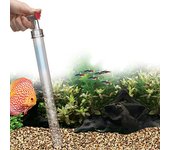 Fluval Aspiradora De Grava FxBricoInn-19,53%59,64 €47,99 €Ver más información
Fluval Aspiradora De Grava FxBricoInn-19,53%59,64 €47,99 €Ver más información Fluval Acuario Spec 10lBricoInn-16,69%96,02 €79,99 €Ver más información
Fluval Acuario Spec 10lBricoInn-16,69%96,02 €79,99 €Ver más información Fluval Muebles Flex 123lBricoInn-20,21%155,40 €123,99 €Ver más información
Fluval Muebles Flex 123lBricoInn-20,21%155,40 €123,99 €Ver más información Fluval Calentador De Acuario T150BricoInn-23,38%39,14 €29,99 €Ver más información
Fluval Calentador De Acuario T150BricoInn-23,38%39,14 €29,99 €Ver más información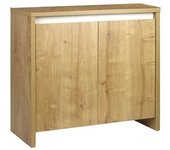 Fluval Muebles Roma 125lBricoInn-15,00%162,34 €137,99 €Ver más información
Fluval Muebles Roma 125lBricoInn-15,00%162,34 €137,99 €Ver más información Fluval Muebles Siena 272lBricoInn466,49 €Ver más información
Fluval Muebles Siena 272lBricoInn466,49 €Ver más información- Rotor Marítimo FLUVAL Cp2Rotor Marítimo FLUVAL Cp2Worten-31,08%34,11 €23,51 €Ver más información
- FLUVAL Rotor Marinho Sp2FLUVAL Rotor Marinho Sp2Worten-31,08%132,44 €91,28 €Ver más información
- FLUVAL C4 Rotor JFLUVAL C4 Rotor JWorten-31,07%28,52 €19,66 €Ver más información
- Guarnição do Rotor FLUVALGuarnição do Rotor FLUVALWorten-31,10%9,26 €6,38 €Ver más información
- Tigela de filtro FLUVAL 306Tigela de filtro FLUVAL 306Worten-31,07%77,98 €53,75 €Ver más información
- Disco cerâmico FLUVAL Co2Disco cerâmico FLUVAL Co2Worten-31,09%12,35 €8,51 €Ver más información
- FLUVAL C4 Bio TelaFLUVAL C4 Bio TelaWorten-31,07%26,81 €18,48 €Ver más información
- FLUVAL C3 Bio TelaFLUVAL C3 Bio TelaWorten-31,08%25,19 €17,36 €Ver más información
- FLUVAL C4 Zeo CarboidratoFLUVAL C4 Zeo CarboidratoWorten-31,06%27,30 €18,82 €Ver más información
- Filtro FLUVAL C4 RotorFiltro FLUVAL C4 RotorWorten15,98 €Ver más información
- FLUVAL Filtro Externo AquastopFLUVAL Filtro Externo AquastopWorten29,71 €Ver más información
- Adorno para Reptiles FLUVAL PequeñoAdorno para Reptiles FLUVAL PequeñoWorten13,88 €Ver más información
- Tratamiento del Agua FLUVAL BiologicalTratamiento del Agua FLUVAL BiologicalWorten25,72 €Ver más información
- Tratamiento del Agua FLUVAL BiologicalTratamiento del Agua FLUVAL BiologicalWorten14,29 €Ver más información
- Filtro FLUVAL C4 FilterFiltro FLUVAL C4 FilterWorten41,88 €Ver más información
- Material Filtrante FLUVAL NanoMaterial Filtrante FLUVAL NanoWorten27,09 €Ver más información
 Fluval C4 Zeo CarbERROR-SentinelBlockException by global-filebroker-upstream-s from com.alibaba.global.filebroker.api.FileBrokerReadService:readPublicFileContent(com.alibaba.global.filebroker.api.dataobject.common.BaseFileOpParamsDTO)Miravia-25,83%26,21 €19,44 €Ver más información
Fluval C4 Zeo CarbERROR-SentinelBlockException by global-filebroker-upstream-s from com.alibaba.global.filebroker.api.FileBrokerReadService:readPublicFileContent(com.alibaba.global.filebroker.api.dataobject.common.BaseFileOpParamsDTO)Miravia-25,83%26,21 €19,44 €Ver más información Fluval 306 Recipiente del filtroERROR-SentinelBlockException by global-filebroker-upstream-s from com.alibaba.global.filebroker.api.FileBrokerReadService:readPublicFileContent(com.alibaba.global.filebroker.api.dataobject.common.BaseFileOpParamsDTO)Miravia-30,28%74,86 €52,19 €Ver más información
Fluval 306 Recipiente del filtroERROR-SentinelBlockException by global-filebroker-upstream-s from com.alibaba.global.filebroker.api.FileBrokerReadService:readPublicFileContent(com.alibaba.global.filebroker.api.dataobject.common.BaseFileOpParamsDTO)Miravia-30,28%74,86 €52,19 €Ver más información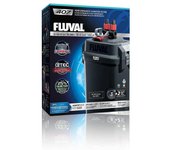 Fluval 407 Filtro ExternoERROR-SentinelBlockException by global-filebroker-upstream-s from com.alibaba.global.filebroker.api.FileBrokerReadService:readPublicFileContent(com.alibaba.global.filebroker.api.dataobject.common.BaseFileOpParamsDTO)Miravia-32,28%436,78 €295,79 €Ver más información
Fluval 407 Filtro ExternoERROR-SentinelBlockException by global-filebroker-upstream-s from com.alibaba.global.filebroker.api.FileBrokerReadService:readPublicFileContent(com.alibaba.global.filebroker.api.dataobject.common.BaseFileOpParamsDTO)Miravia-32,28%436,78 €295,79 €Ver más información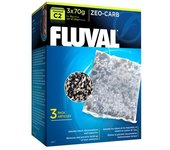 Fluval C2 Zeo CarbERROR-SentinelBlockException by global-filebroker-upstream-s from com.alibaba.global.filebroker.api.FileBrokerReadService:readPublicFileContent(com.alibaba.global.filebroker.api.dataobject.common.BaseFileOpParamsDTO)Miravia-19,30%13,42 €10,83 €Ver más información
Fluval C2 Zeo CarbERROR-SentinelBlockException by global-filebroker-upstream-s from com.alibaba.global.filebroker.api.FileBrokerReadService:readPublicFileContent(com.alibaba.global.filebroker.api.dataobject.common.BaseFileOpParamsDTO)Miravia-19,30%13,42 €10,83 €Ver más información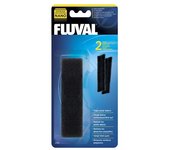 Fluval Nano Foamex FinoLos filtros Fluval Nano están perfectamente diseñados para proveer de limpieza al agua de los acuarios de menor tamaño, hasta 55 litros de capacidad. Estos filtros son pequeños y muy fáciles de colocar, ya que no requerirán una instalación determinada. Son idóneos para acuarios pequeños donde vivan peces de menor tamaño, pequeñas gambas u otros invertebrados delicados. PRESENTACIÓN: 1 envase con 2 unidades de Foamex FinoMiravia-11,66%8,58 €7,58 €Ver más información
Fluval Nano Foamex FinoLos filtros Fluval Nano están perfectamente diseñados para proveer de limpieza al agua de los acuarios de menor tamaño, hasta 55 litros de capacidad. Estos filtros son pequeños y muy fáciles de colocar, ya que no requerirán una instalación determinada. Son idóneos para acuarios pequeños donde vivan peces de menor tamaño, pequeñas gambas u otros invertebrados delicados. PRESENTACIÓN: 1 envase con 2 unidades de Foamex FinoMiravia-11,66%8,58 €7,58 €Ver más información Fluval 207 Filtro ExternoERROR-SentinelBlockException by global-filebroker-upstream-s from com.alibaba.global.filebroker.api.FileBrokerReadService:readPublicFileContent(com.alibaba.global.filebroker.api.dataobject.common.BaseFileOpParamsDTO)Miravia-32,03%272,98 €185,54 €Ver más información
Fluval 207 Filtro ExternoERROR-SentinelBlockException by global-filebroker-upstream-s from com.alibaba.global.filebroker.api.FileBrokerReadService:readPublicFileContent(com.alibaba.global.filebroker.api.dataobject.common.BaseFileOpParamsDTO)Miravia-32,03%272,98 €185,54 €Ver más información Fluval 107,207 Adaptador de GomaERROR-SentinelBlockException by global-filebroker-upstream-s from com.alibaba.global.filebroker.api.FileBrokerReadService:readPublicFileContent(com.alibaba.global.filebroker.api.dataobject.common.BaseFileOpParamsDTO)Miravia-10,48%8,11 €7,26 €Ver más información
Fluval 107,207 Adaptador de GomaERROR-SentinelBlockException by global-filebroker-upstream-s from com.alibaba.global.filebroker.api.FileBrokerReadService:readPublicFileContent(com.alibaba.global.filebroker.api.dataobject.common.BaseFileOpParamsDTO)Miravia-10,48%8,11 €7,26 €Ver más información
¿Cómo ahorrar comprando Fluval?
Comprar por Internet se ha convertido en algo habitual.
Si queremos comprar el nuevo modelo de zapatillas Nike Air Max para correr, el último modelo Samsung Galaxy, o algún producto de segunda mano, se nos viene a la cabeza Amazon o eBay, casi de forma inmediata.
Comprar por Internet tiene sus ventajas. Te permite acceder desde casa, de forma cómoda y sin barreras, a una oferta mucho más amplia y variada.
Sin embargo, el número de tiendas online y el catálogo de productos y servicios disponibles está en constante crecimiento, lo que genera una gran competencia. Esto obliga a la mayoría de los comercios a aplicar promociones de corta duración que les permita ofrecer los mejores precios para sus productos en cada momento.
En este sentido, Luprice.es te permite comparar precios y condiciones entre los diferentes comercios online de forma rápida y eficaz, y te ayuda en tu decisión de compra, lo que te puede suponer un ahorro significativo al adquirir Fluval.
Nuestra selección tiene en cuenta los productos de menor coste, características, relación calidad-precio y las mejores condiciones de envío, para que puedas elegir la mejor oferta de Fluval para ti.
Puedes recibir este producto cómodamente y sin salir de casa, con la tranquilidad de realizar tus compras en sitios de confianza, y beneficiándote del mejor precio.
